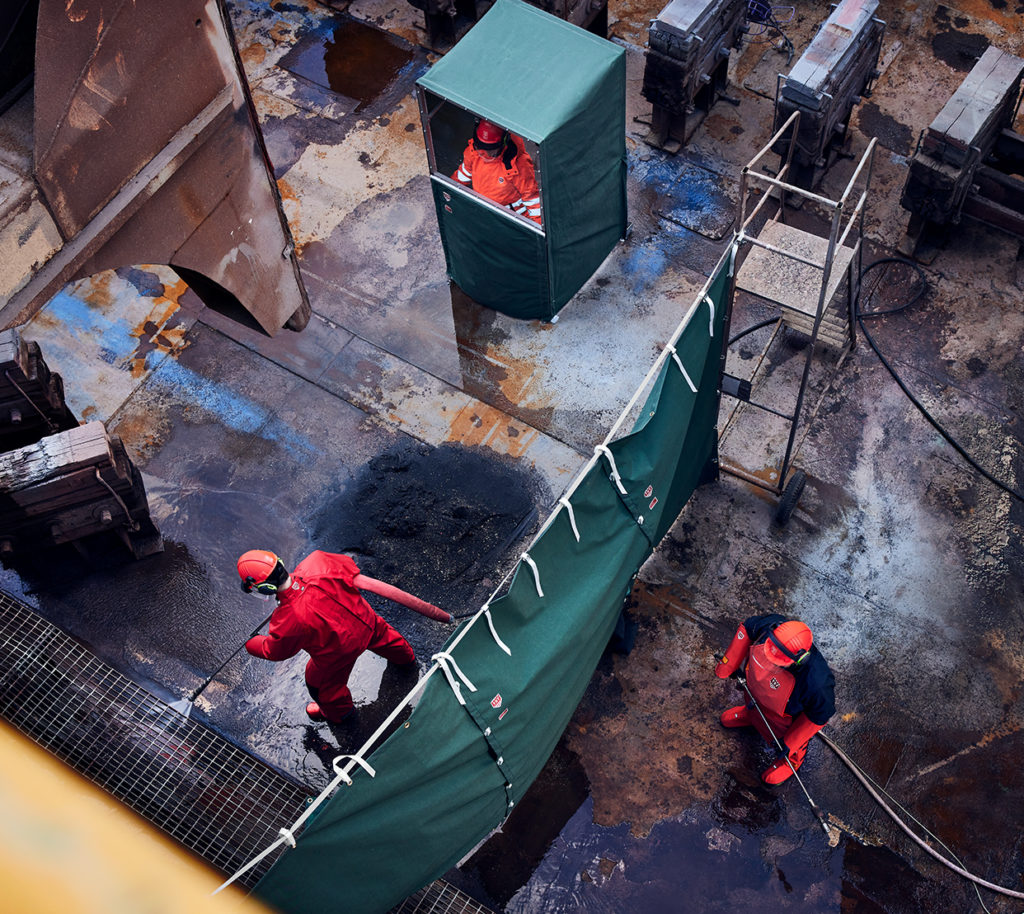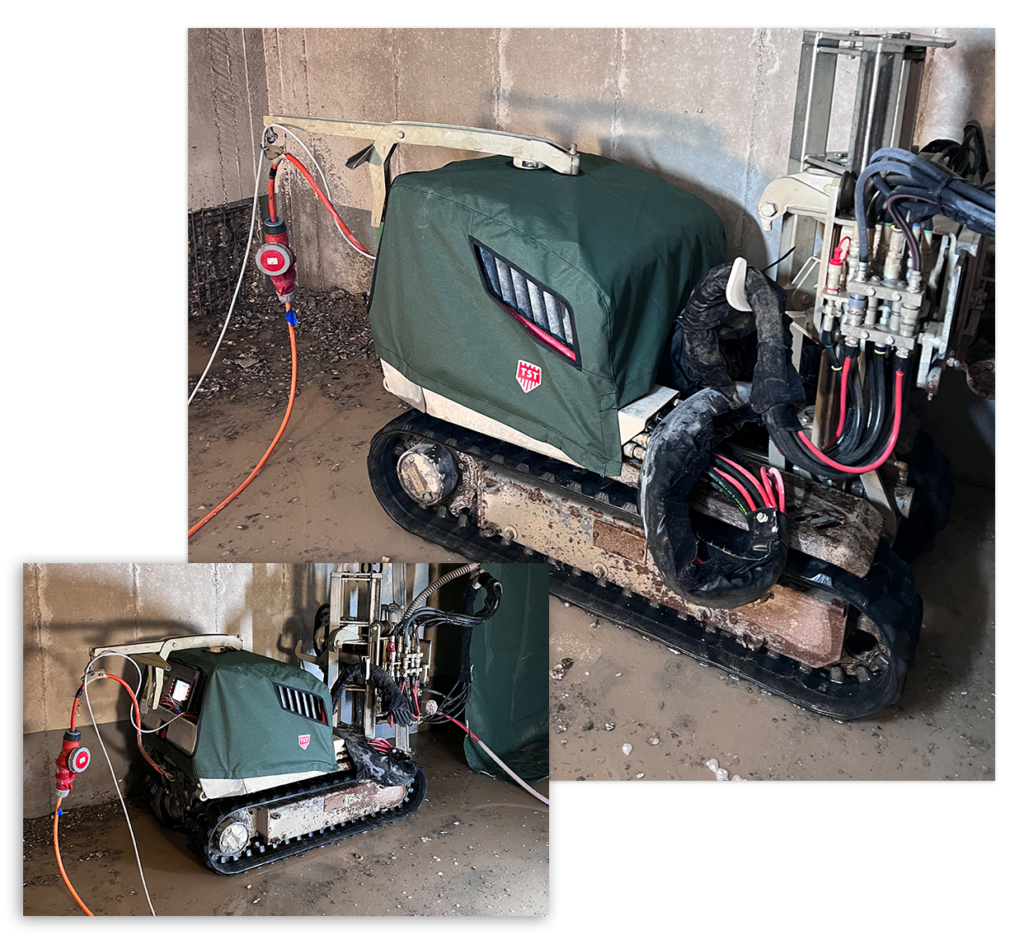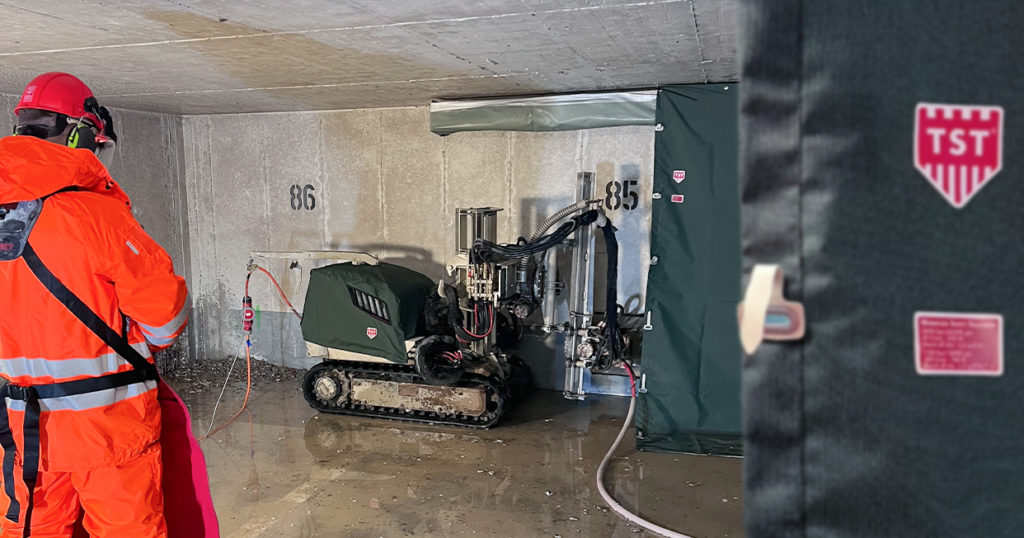Testing products for a
safer tomorrow
The journey from idea to final product is a time-consuming process, but when working with products designed to save lives precision is paramount and there’s no room to haste or make mistakes. To make sure the products are up to the task, thorough testing is needed throughout various stages of the production chain. One of the final and most crucial steps in creating a product is live testing, the moment when the answer to whether or not a product will perform as expected is finally revealed. Down below you get to take part in two different tests, for two brand-new TST products that are yet to hit the market.
TST Sweden is well-known in the industry for being a front-runner in the protective equipment and clothing industry for high water pressure. A significant factor in our success is our commitment to developing products based fully on industry needs. By working closely together with end-users we are able to provide solutions that enhance safety and efficiency in workplaces where water jetting is carried out. Before our products hit the market, they are thoroughly tested both in labs and out on live tests together with their end users.
When SVB, a Swedish company that offers industrial and environmental remediation services, as well as concrete and surface treatment work, was tasked with cleaning out Preem’s oil refinery in Gothenburg they got the opportunity to take one of our up-and-coming products for a test run before it hit the market, the Safety Pipe Cap.
 Protective Curtains create lightweight and flexible barriers that minimize the safety area and enables several operators to work closer together.
Protective Curtains create lightweight and flexible barriers that minimize the safety area and enables several operators to work closer together.
The Safety Pipe Cap is developed to make cleaning of pipes easier and safer by protecting the operator, equipment, and passersby from ricocheting gravel and contaminated water. It also makes the process more environmentally friendly as it makes it easier to collect dirty water keeping it from contaminating the surrounding environment. According to SVB, it was a real hit.
– We have tried out protective equipment that serves the same purpose before, but what set TST’s Safety Pipe Cap apart from them was the easiness of attaching and removing it from the pipe. Similar products have historically been bolted on with aluminum couplings, which are both time-consuming, heavy, and require tools. The Safety Pipe Cap was instead very flexible and saved us both time and a lot of extra labor since we could attach it in under a minute with just straps, says Viktor Lövsted, Business Area Manager Petrochemicals & Pulp/Paper at SVB.
During the work for Preem, SVB also tried out our Protective Curtains. The oil refinery was crowded, and the curtains helped to block and shield off the work site, making the work area smaller allowing operators to work closer together while also protecting both people and machinery. Protection like this is usually built with bulky materials like plywood or metal, making the versatile and flexible curtains a considerably more user-friendly alternative.
“THE SAFETY PIPE CAP WAS INSTEAD VERY FLEXIBLE AND SAVED US BOTH TIME AND A LOT OF EXTRA LABOR SINCE WE COULD ATTACH IT IN UNDER A MINUTE WITH JUST STRAPS”
– Viktor Lövsted, Business Area Manager Petrochemicals & Pulp/Paper at SVB.
Another example of our collaboration and testing with end-users is this new product well on the way out to the market sparked by a specific request from OFTEC in Germany.
– We recently tried out a new product together with one of our distributors, OFTEC, in Germany. They develop, sell, and lease out high-pressure cleaning robots, and requested protection for one of their hydrodemolition robots that blasts concrete. Since robot protection was something we have considered developing, we decided this was a great opportunity to try to develop just that, says Annette Hessel, International Sales Manager at TST Sweden.
When concrete is subjected to blasting, the release of potent chemicals within the material is unleashed, causing damage to anything that comes into contact with the contaminated water. This was the challenge OFTEC faced; when contaminated water hit their robot the lacquer on its hull was quickly ruined, and often after just one use the hull needed to be repainted or exchanged altogether, which is both costly and time-consuming. The solution we came up with was robot protection made out of an extremely strong fabric called Techsteel™. The fabric is both dirt and water repellent, which makes it easy to clean, and is furthermore reinforced with Vectran® (LCP) for maximum strength and durability, protecting the robot efficiently from contaminated water.
 TST Sweden’s newest development – protection for
TST Sweden’s newest development – protection for
hydrodemolition robots.
 A safe workplace for all – the operator by wearing protective clothing, the robot is shielded by the new robot protection and passersby are safe on the other side of the barrier created by the protective curtains.
A safe workplace for all – the operator by wearing protective clothing, the robot is shielded by the new robot protection and passersby are safe on the other side of the barrier created by the protective curtains.
Once we had designed and developed a prototype for the robot protection we brought it with us for testing together with OFTEC. The test took place in an underground parking garage where concrete needed to be removed. An AquaJet 410 was used and before the work began it was equipped with the new robot protection. The cover was attached easily to the robot with magnetic fasteners and from there on it was ready to go. Both we and OFTEC were pleased with the result of the test, and after some minor adjustments, we expect to sooner rather than later be able to launch this new and exciting product to the wider mass.
Our Safety Pipe Cap is still under development and is expected to launch during IFAT Munich in May 2024 and will feature a variety of adjustable size options. The robot protection is under development and does not yet have a set launch date.
TST Sweden article published in WJTA Jet News, reprinted with permission.
